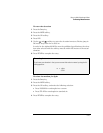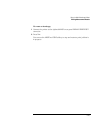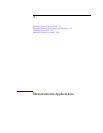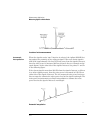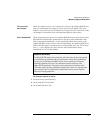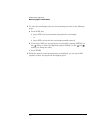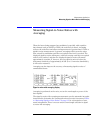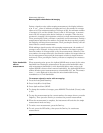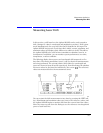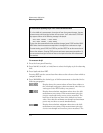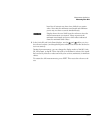
3-5
Measurements Applications
Measuring Signal-to-Noise Ratios
User-entered
wavelength
When the signal-to-noise “user” function is selected, the Agilent 86120B uses
only one wavelength to measure the noise power for all signals. This wave-
length is set by the user and all signals are compared to the noise level at this
wavelength to determine their corresponding signal-to-noise ratios.
Noise bandwidth
When measuring noise power, the Agilent 86120B must account for the noise
bandwidth used during the measurement. Because noise bandwidth varies
with measurement bandwidth (a wide bandwidth allows more noise to the
Agilent 86120B’s detector than a narrow bandwidth), the Agilent 86120B nor-
malizes all noise power measurements to a bandwidth of 0.1 nm. The annota-
tion
0.1 nm
is displayed to show that the noise bandwidth is being
normalized to a 0.1 nm bandwidth.
To measure signal-to-noise
1
Press the front-panel
Preset
key.
2
Press
List by WL or List by Power
.
3
Press
Appl’s
and then
S/N
.
Repetitive data formats
The Agilent 86120B signal-to-noise application works best when the laser being tested
is not modulated, or modulated with non-repetitive data formats. With repetitive data
formats, such as PRBS data and SONET formats, there is significant low-frequency
amplitude modulation of the laser. This modulation raises the noise floor of the
Agilent 86120B significantly. The signal-to-noise measured can be limited to about
15 dB while measuring lasers modulated by repetitive data formats. For improved perfor-
mance when the laser is modulated with repetitive data formats, use the Signal-to-
Noise with Averaging application.



